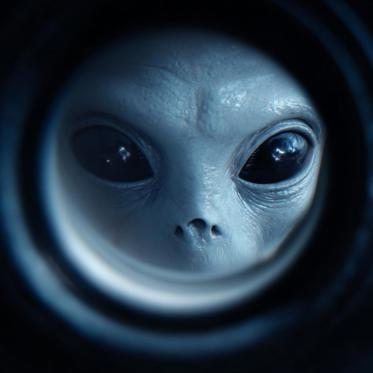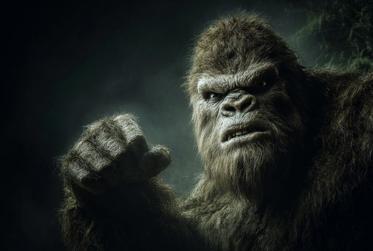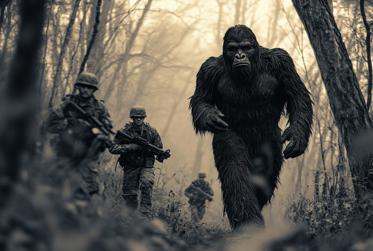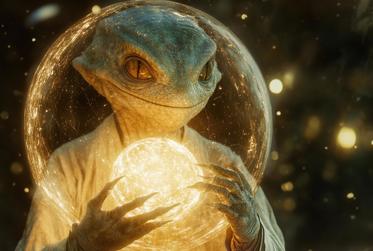The Bigfoot and the Yeti (or Abominable Snowman) are known to almost everyone, both inside and outside of the paranormal and anomalous world. Indeed, so well known are these creatures that to many, even those would not class themselves as “believers” in the weird and the wonderful perhaps would not be at all surprised if proof of their existence was discovered, with many people accepting there is a good chance that these creatures are very real and not just the stuff of legends, myths, and folklore.
These elusive creatures, though, would appear to be far more than an undiscovered primate or even hominid. Those who have researched, studied, and investigated these mysterious creatures suspect that rather than just being another animal waiting to be discovered and catalogued by science, they are perhaps something much more otherworldly, and understanding these creatures could very well help us understand the bigger picture of the paranormal and anomalous world. Indeed, the notion that Bigfoot creatures are simply an undiscovered animal or a possible hominid is very much up for debate. There is good reason to suspect that these creatures, far from being merely flesh-and-blood animals, are something much more, possibly supernatural, perhaps even interdimensional.
Perhaps one of the first areas of concern (outside of a lack of a recovered body or evidence of a Bigfoot habitat) surrounding an undiscovered flesh-and-blood beast that had eluded detection for seemingly thousands of years was the many accounts that featured these Bigfoot creatures seemingly vanishing into thin air. The highly respected researcher and author, Linda Moulton Howe, for example, recalled an encounter that a rancher had with a Bigfoot creature on his land. She stated that the rancher in question suddenly found himself only several feet from this menacing creature, and after a moment of contemplation, he instinctively raised his weapon and prepared to fire. Before he could, though, the creature simply disappeared in a bizarre flash. This detail can be found in multiple Bigfoot reports and accounts, with many witnesses stressing how the creature was “there one minute and then gone the next!”
We might ask, then, are these creatures simply making themselves invisible? As bizarre as that might sound, there have been several intriguing pieces of footage circulating on the Internet for several years of what appears – or is at least claimed – to show a “cloaked Bigfoot” creature.
Or might it be that these creatures quite literally leave our realm of existence to a destination elsewhere, another dimension, perhaps, or even another time? And if that is true, then how do they achieve this? Can they manipulate reality or the environment to create a portal or gateway, and if so, do they achieve this through their own supernatural (to us) abilities, or do they utilize some kind of advanced technological device? Or perhaps they are simply aware of where certain X-points exist, and are sure not to venture too far from them, which might explain why there are certain “cluster areas” throughout the North American continent of Bigfoot hotspot locations?
Just one Bigfoot researcher who has concluded that these Bigfoot creatures are using some kind of portal or interdimensional gateway to enter our world is Becky Cook, who investigated dozens of Bigfoot encounters throughout the state of Idaho. Cook, though, has also gathered further remarkable data, not least that around 70 percent of people who have had encounters with a Bigfoot creature have also had “at least one near-death experience!” Moreover, rather than just being a strange and fascinating statistic, Cook believes that these near-death experiences have likely opened something within a person’s mind or perception that allowed them to see these elusive creatures in the first place.
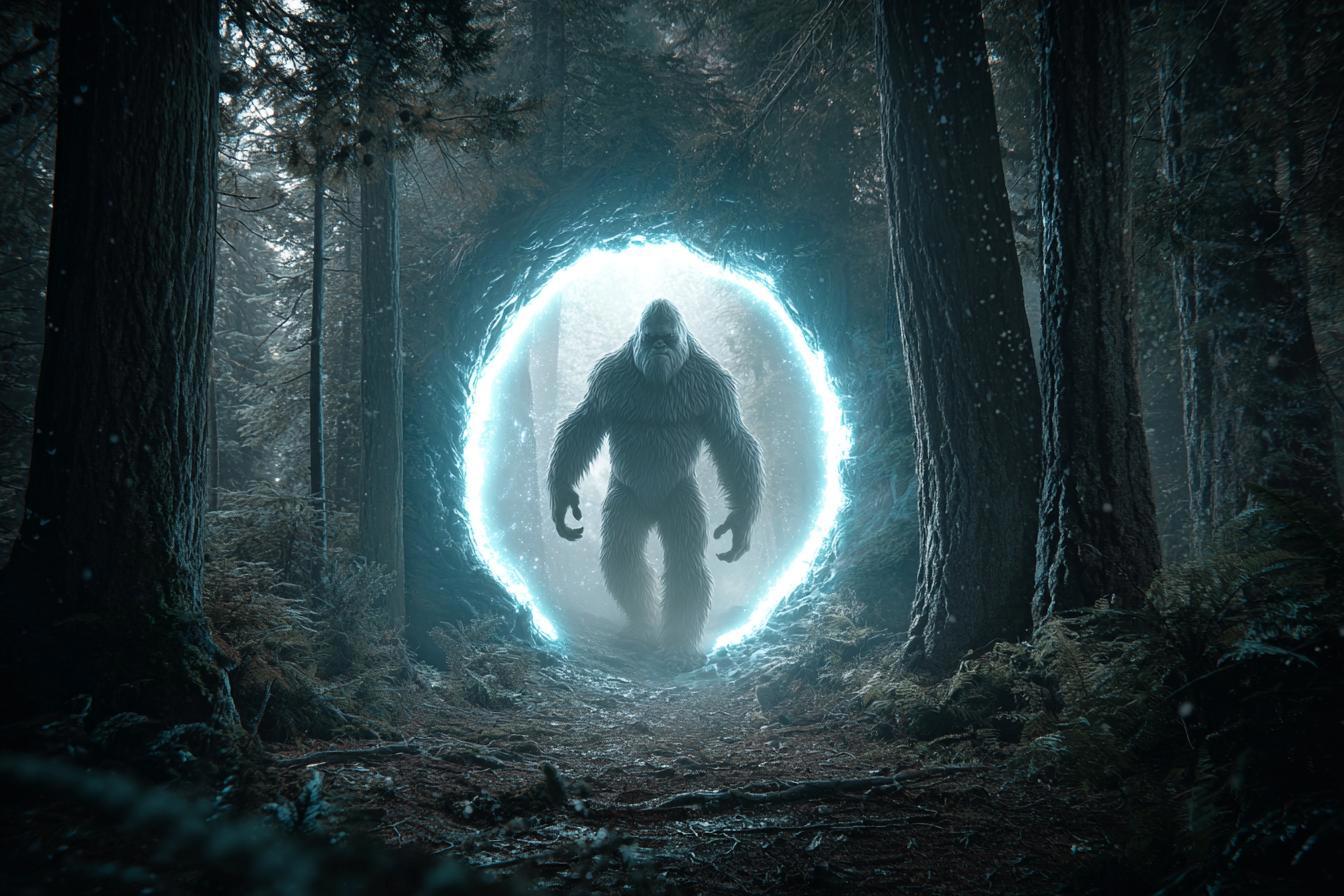
There are ample reasons for us to contemplate that these Bigfoot creatures are not only highly intelligent but also have the ability to alter time and even wipe memories, either due to their unique capabilities or, as strange as it might sound, with access to some kind of advanced technology.
With this in mind, an encounter that unfolded in New Zealand in the late 1990s is of particular interest to us here. The anonymous witness claimed in his report that he and a friend were hiking in the wilderness and had made camp in a clearing in the forest on the night in question. During the night, the witness woke needing to relieve himself and so left the tent in order to do so. However, while answering the call of nature, he spotted two huge, hairy, beast-like creatures appear, as if from nowhere, out of the trees, approaching the tent where his hiking partner remained asleep. He noticed that they each took exceptionally long strides as they moved. Moreover, he stated that he could almost “feel” each footstep through the ground itself. Then, the two creatures came to a stop right outside the tent’s entrance. The witness remained as quiet and as still as he could, watching as the two creatures seemingly sized up the tent in front of them. After several moments, they simply turned and headed back into the woodland. By the time the witness returned to the tent, he could see from the look of distress on his face that his friend had also witnessed the bizarre event. The following morning, things turned even stranger.
By 7 am, with daylight bringing a slight sense of calm to the two hikers, they decided to head into the woods in the direction the Bigfoot-type creatures had disappeared. However, almost immediately after heading in that direction, the two witnesses found themselves approaching their camp area. Moreover, it was now sunset. They checked their watches and discovered that 12 hours had passed, 12 hours that they had no memory of whatsoever. Whether this missing time is connected to the strange creatures or not is perhaps open to debate. There are, though, several things for us to consider.
Firstly, there is a connection between UFO hotspots and areas of regular Bigfoot reports, with an increase in such reports usually coinciding with increases in UFO sightings. With this in mind, then, the two witnesses could have found themselves at the center of a close UFO encounter, perhaps even an alien abduction. Even with this possibility, there are perhaps two main “sub-possibilities” to consider. The first is that the two strange creatures are somehow connected to this speculative UFO, and so facilitated an equally speculative abduction scenario. Or, the second possibility is that, if we assume for one moment that these Bigfoot creatures are arriving in our realm from elsewhere, that whatever mechanism they use for this also allows UFOs access to our world, and so this mechanism, combined with the hikers’ curiosity, placed them in the middle of a close encounter. Indeed, if this were the case, then the location in New Zealand (which, unfortunately, is not known) could be considered a place of High Strangeness. Of course, alien abduction is not the only possibility.
If not UFOs or alien abduction, then might we consider that the Bigfoot creatures themselves were responsible for the missing time of the two hikers? Some researchers into these elusive creatures suggest that they not only have the ability to come in and out of our realm of existence (making them both supernatural and flesh-and-blood creatures at the same time) but that they are able, using nothing more than the powers of their minds, able to force people to simply not see them (essentially, making themselves invisible) or for a person to forget their encounters altogether. Could that have been the case here? Could the two creatures have encountered the two hikers the following day and simply erased their minds somehow using some kind of invasive form of telepathy? Indeed, telepathy is another trait that several researchers have suggested these creatures are skilled with.
With this in mind, it is worth exploring another encounter with a Bigfoot creature in the early 2000s in the woodlands of New Hampshire in the United States. According to the report, the anonymous witness was hiking in a remote area, deep in the woods, when he stumbled upon a wounded deer. It was still alive, but it had an arrow sticking out of its body. The witness carefully pulled the arrow out, discarded it, and then tied the deer to a nearby tree so that he could clean the wound. Ultimately, he decided to set up his basecamp next to the deer and continued to tend to it for several days. When it was fully healed and back to good health, he untied the animal, and it headed off back into the woodland. A short time later, the witness began packing up his equipment, ready to move on and explore elsewhere. As he was doing so, however, he suddenly sensed movement behind him. He spun around and was more than shocked to see a Bigfoot creature sitting on a log no more than 20 feet away from him. Then, an already bizarre situation turned even more surreal.
To his shock, this strange creature spoke to him, although not physically, but directly into his mind. This creature stated that it had been watching him as he had cared for the deer and nursed it back to good health. As the creature was telling him this, the witness thought to himself that this figure was the source behind the many sounds of snapping twigs and rustling of bushes he had heard over the last several days. To his further amazement, the creature then confirmed this to him only moments after he had thought it.
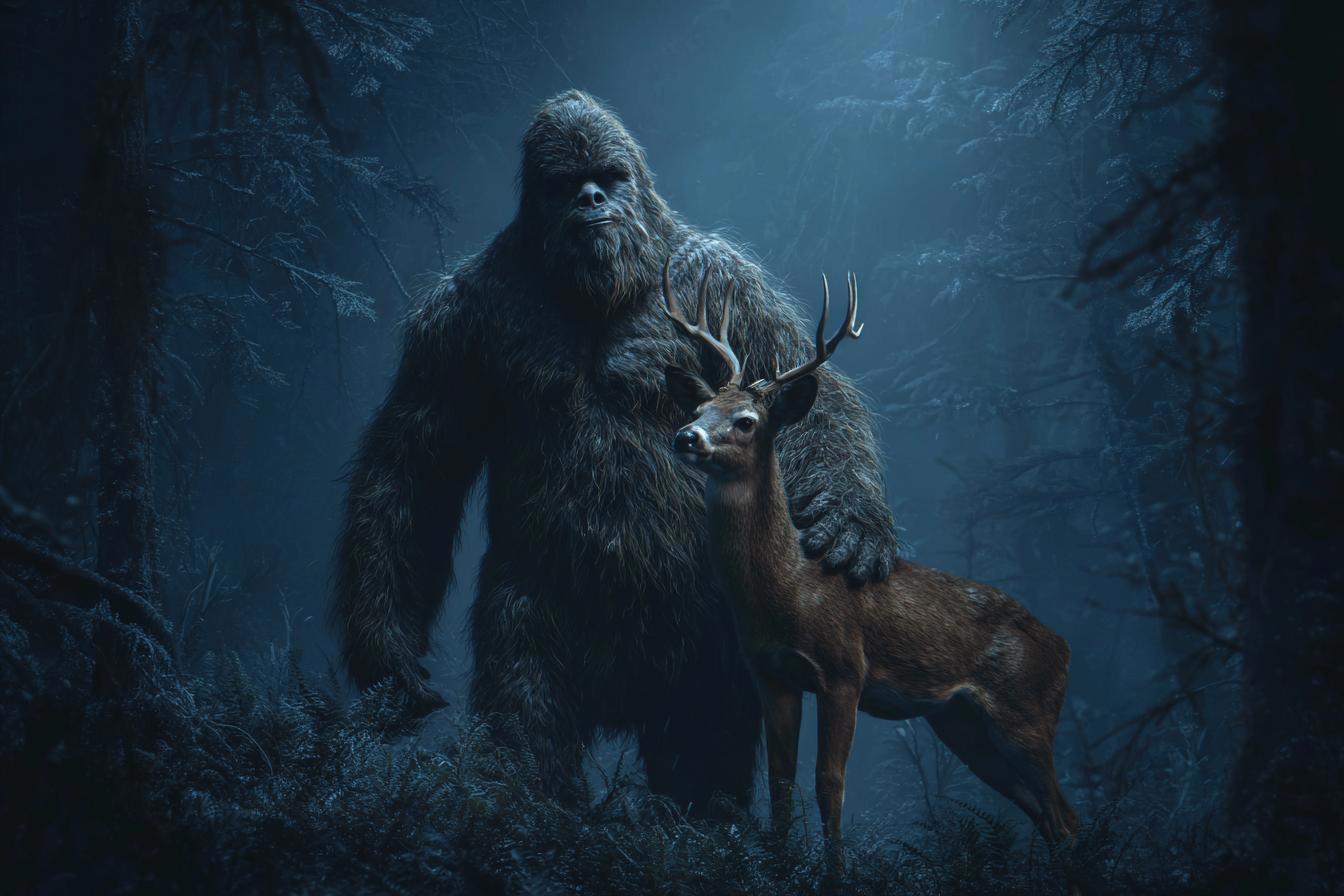
While there are reports of Bigfoot creatures all around the planet – some of which we will explore shortly – undoubtedly the biggest concentration of reports comes from North America, particularly the United States and Canada. Furthermore, these reports are only continuing today; they appear to be increasing. One particular encounter made international news headlines in January 2019 after a missing child was discovered, safe and well, offering to his mystified parents and searchers that “a bear helped him” to get back home. According to the reports, three-year-old Casey Hathaway went missing from his North Carolina home and remained missing for the next 48 hours, seemingly somewhere in the forests close to his home in freezing conditions. Then, not only was he discovered safe and well, but he also offered his account that the bear had kept him safe and, essentially, brought him home.
As we might imagine, many experts and people involved with the search put forward that the boy’s claims were simply a coping mechanism, or even a “fantasy” of his creation, not least as not only are there no known similar accounts on record, but most bears would have been deep into hibernation at this time of year. While most people were happy enough to accept this explanation, those in the Bigfoot community believed that the truth of the matter was staring people right in the face. One such commentator stated that:
“….…there are no reports available of bears coming out of hibernation to tend to lost children. However, also on record, are many reports of Bigfoot helping lost children…So, did Casey Hathaway spend two days with a bear, or did he spend two days with a Bigfoot? Some may doubt such a thing. However, in the light of what we know about bears in winter. And Bigfoot’s documented interaction with other children. I am going with Bigfoot!”
Just what did happen to the young boy in question remains unknown. There are, however, other cases on record of people going missing, particularly young children, who have claimed a “hairy man” fed and looked after them and returned them home, many of which have been documented by David Paullides as part of his Missing 411 research. Moreover, these encounters stretch back well over a century, at least.
In Northern Michigan in 1868, for example, a three-year-old girl seemingly vanished into thin air while with her father at a lumber camp. He later stated that his daughter was there one moment, and then gone the next. With the help of two local hunters, the three men set out in search of the missing girl in the next woodland. They searched for the remainder of the day until nightfall forced them to stop. Then, the following morning, they returned to the woods to continue the search. To begin with, it appeared their efforts would go unrewarded. Then, much to their surprise and relief, they heard the “muffled or muted” sounds of a young girl’s voice somewhere close by.
The three men followed the sound of the voice, eventually coming to a river. There, they heard a large splash, and when they turned their focus to where the noise had come from, they could see a “dark shape” that was swimming away from them, towards the opposite riverbank. Before they could take in any further details, however, they noticed the missing girl, standing on a log nearby. She was seemingly in shock, but otherwise unharmed. Eventually, the young girl spoke of the incident to her father, claiming that the large figure – which she called “Mr. Wolf” – had held her prisoner somewhere near the water. What’s more, the creature had “eaten her hat and taken her shoes” (indeed, she was discovered without her hat or shoes). Although she didn’t explain why, she said the wolf-like creature had taken her to the river and left her on the log where she was found. Was the dark figure the three men witnessed Mr. Wolf? And was this strange creature, in fact, a Bigfoot?
Just short of three decades later, there is another encounter of a child who went missing before being discovered that could also have involved a Bigfoot-like creature. Although there is no direct evidence to suggest this, some of the details in the case are very similar to the missing girl in Michigan 30 years earlier. In August 1897, in Maine, six-year-old Lillian Carney was picking blueberries (a bizarre detail that often shows up in missing persons cases) with her mother she simply vanished. Her panic-stricken mother immediately raised the alarm, and a short time later, no less than 200 volunteers were searching the area for the missing girl. She was eventually discovered two days later, although her discovery brought with it more questions than answers.
To begin with, she was in a “trance-like state” and several “dazed!” However, she eventually managed to speak to her parents about her ordeal. She claimed that she had suddenly found herself in the middle of the forest “where the sun had shone the entire time!” It has never been made clear what she meant by this, not least as the weather during the time of disappearance was grey and overcast, and she spent at least some of the time she was missing at night. This has led some people to speculate that she was perhaps inside some kind of structure or building deep in the forest, or that she had even been a victim of alien abduction, and the “sun” was, in fact, some kind of artificial light. We might also consider whether she had quite literally vanished into thin air. After all, if we accept the notion that portals could be responsible for at least some of the Bigfoot appearances and disappearances, perhaps this might also explain not only the young girl’s sudden disappearance and reappearance, but also the constantly shining sun.
Almost exactly a year later, on the afternoon of August 25th, 1898, three-year-old Alice Rachel Peck was picking berries with her mother when she simply disappeared. She was eventually found three days later, no less than five miles away. Much like Lillian and the girl from Michigan, Alice was in a trance-like state, at least to begin with. Then, after several hours, she recalled walking along a strange road and that she was missing her shoes. Perhaps strangest of all, though, an odd creature that she referred to as “the black man” guided her to a safe spot where she was eventually found. Was this “black man” she referred to a Bigfoot creature?
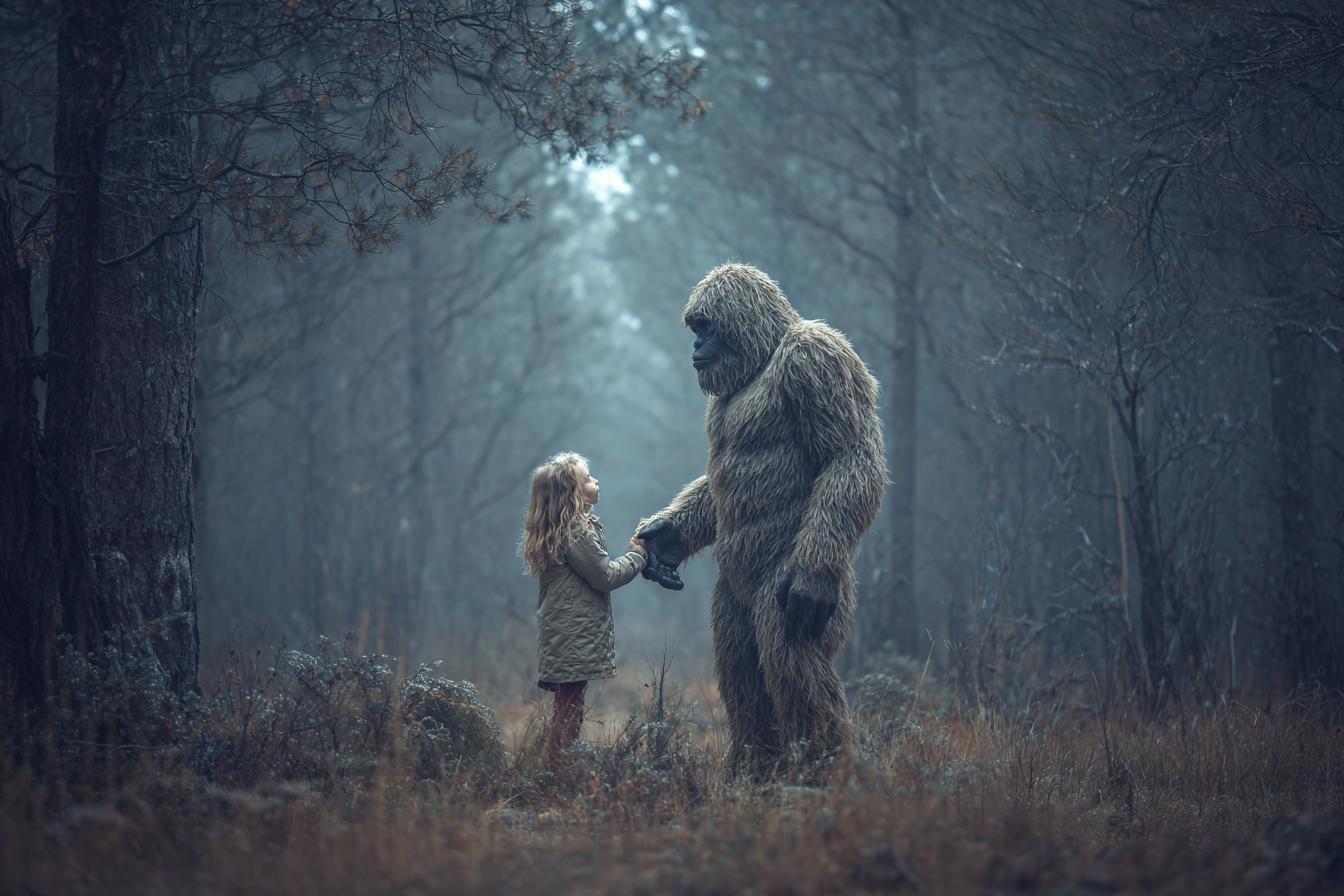
It is also interesting to note that each of these cases featured the respective witnesses feeling dazed and confused following their discovery. If we accept, for a moment, that these cases did involve Bigfoot creatures, is this an example of their apparent ability to control a person’s mind and make it difficult for them to recall their encounters?
In more recent times, even if we take only the second half of the twentieth century onwards, there have been multiple reports of Bigfoot – quite literally thousands of sightings and encounters, specifically so in the United States and Canada. And while these reports occur regularly and consistently, some of the strangest and most detailed occur during UFO waves. In 1973, for example, during one of the busiest and most active UFO waves in history in Fayette County, Pennsylvania, a particularly intriguing Bigfoot encounter unfolded.
According to the account, at around 9 pm on October 25th, multiple witnesses reported seeing a “red spherical object” hovering low over a nearby field. Then, after several moments, the glowing, red orb began to descend, eventually landing in the field in question. Intrigued, several of the witnesses headed over to the landed object. As they approached, they could hear a strange “whirring” sound and could see that the strange object was white and dome-shaped. Most bizarre of all, though, they witnessed two tall figures, each between seven and nine feet tall, emerge from the object. These creatures were covered in thick, shaggy hair, and each had arms that appeared too long for their frames. Most disturbing, however, were the glowing green eyes that each figure sported.
By now, several of the witnesses had drawn their weapons, and, rightly or wrongly, they opened fire on the two creatures. However, rather than drop to the ground injured or even dead, the two figures turned around, and a moment later, a blinding flash filled the witnesses’ vision. When this flash had cleared, the object was no longer there, and the two figures were almost a speck in the distance near the surrounding woodland.
A team of local UFO investigators arrived at the location shortly after, and remained there for most of the night. They noticed that the animals that would normally use the field and graze there wouldn’t go anywhere near it, as if they sensed something utterly terrible. Even stranger, they noticed that almost all of these animals paid them no attention whatsoever, but instead, appeared to be focused on the woods where the two creatures had disappeared. Stranger still, at one point during the evening, investigators witnessed a blinding flash – similar to that witnessed by the witnesses in the field they were investigating – come from another local farmhouse a short distance away. Then, an already bizarre and surreal experience turned even stranger.
Suddenly, one of the witnesses went into a bizarre trance-like state. Stranger still, he began barking and howling like a dog. This continued for several moments, with the witness even pushing investigators to the ground when they tried to restrain him. He ran off into one of the fields, the bizarre, guttural, animalistic sound coming from him as he did so. Then, the sounds stopped for a second or two before an “inhuman scream” came from him. Following this, the man collapsed to the ground, seemingly released from whatever power had overtaken him. As this was happening, investigators noticed the sudden odor of “rotting eggs” – most likely sulfur, an aroma that accompanies a whole host of paranormal phenomena, from ghosts to UFOs, and, of course, Bigfoot encounters. Incidentally, when the man came to, he was able to give a clear description of the events, claiming that while he was in this trance, his mind filled with visions of “the end of the world!”
If there is a Bigfoot presence on the North American continent, whether a permanent one or a recurring temporary one, they have been there for hundreds, perhaps thousands of years. Many Native American legends, for example, not only refer to these Bigfoot-like creatures, referred to by some tribes as Skoocooms, who they believed were a supernatural-type being.
We might also explore the records of the Norse explorer Leif Erikson, who appears to describe witnessing strange, beastly men during his expedition to the region. Although some researchers put the date of this expedition in the year 986, it appears more likely that the date would have been at some point in the early 1000s. According to the account, as they navigated the New World (North America) they stumbled upon “manlike beasts” who were “horribly ugly, hairy, swarthy, and with great black eyes!” Furthermore, these strange creatures had a “rank odor” and issued a “deafening shriek”, and it was clear that they “towered over” Erikson and his men. According to the record, Erikson and his men had several such encounters with these hairy beasts, and it is perhaps worth noting that Erikson’s men themselves had long hair and thick beards, so, interestingly, they should describe these strange men as “hairy”, perhaps indicating that they were making reference to hair that covered the entire body.
As we mentioned, it isn’t just in North America where Bigfoot encounters are reported. If we turn our attention to the United Kingdom for a moment, we find the research and investigations of Adam Bird, the co-founder of the British Bigfoot Research Organization, who not only documented a Bigfoot encounter in the woods of Lincolnshire in the 2010s, but also captured a picture of it. After collecting several reports from the area, Bird ventured out to the woodland himself. Not long after arriving, he noticed strange footprints in the ground and began hearing the occasional rustling coming from close by. Then, he spotted a strange, shadowy ape-like figure that appeared to be watching him from the surrounding trees. It was at this point that Bird snapped the picture, although he and several fellow members of the organization remained in the area for several hours, during which time they “felt watched and followed!” Bird offered to the media following the encounter that Bigfoot creatures are spotted all over the UK, with reports seemingly beginning to “spread from Scotland right down to southern England!” Moreover, Bird put forward that the creatures themselves are “something unknown” and that the picture he managed to capture “could be genuine evidence that the British Bigfoot exists!”
It is also worth our time exploring the Bigfoot sightings recorded in what is today modern-day Germany, with historical, legendary accounts of a creature known as a Wildermann, whose description is almost identical to what most people would recognize as a Bigfoot. The Wildermann is described as being hairy from head to toe, with huge feet that often leave impressions in the ground. Arguably, the first officially documented encounter with a Bigfoot in Germany occurred in 1855 when Johann Georg Schmidt reported encountering a hairy man-like creature while he was walking in the forests of Bavaria.
In more recent times, in 1963, several hikers were making their way through the Black Forest when they spotted a Bigfoot-like creature a short distance away. Just short of 20 years later, in 1982, Peter Durr not only spotted a Bigfoot creature on the Bavarian Alps, but managed to capture a photograph of it. Even in the contemporary era, there continue to be sightings and reports. In 2015, for example, a young couple reported seeing such a creature heading towards the Harz Mountains, while in 2018, a man encountered a Bigfoot close to the Rhine River.
If we venture to the other side of the world, to Australia, we can find legends of the Yowie, said to roam the Australian Outback, and these legends go right back to the indigenous tribes of the region. The Yowie is said to be anywhere from six to 12 feet in height and has a distinct “ape-like” appearance, although, like Bigfoot, it walks upright on two legs. Despite this domineering appearance, the Yowie is said to do its best to avoid human contact, and there have been no known cases of a Yowie showing aggression (although there are reports of “savaged pets” on record).
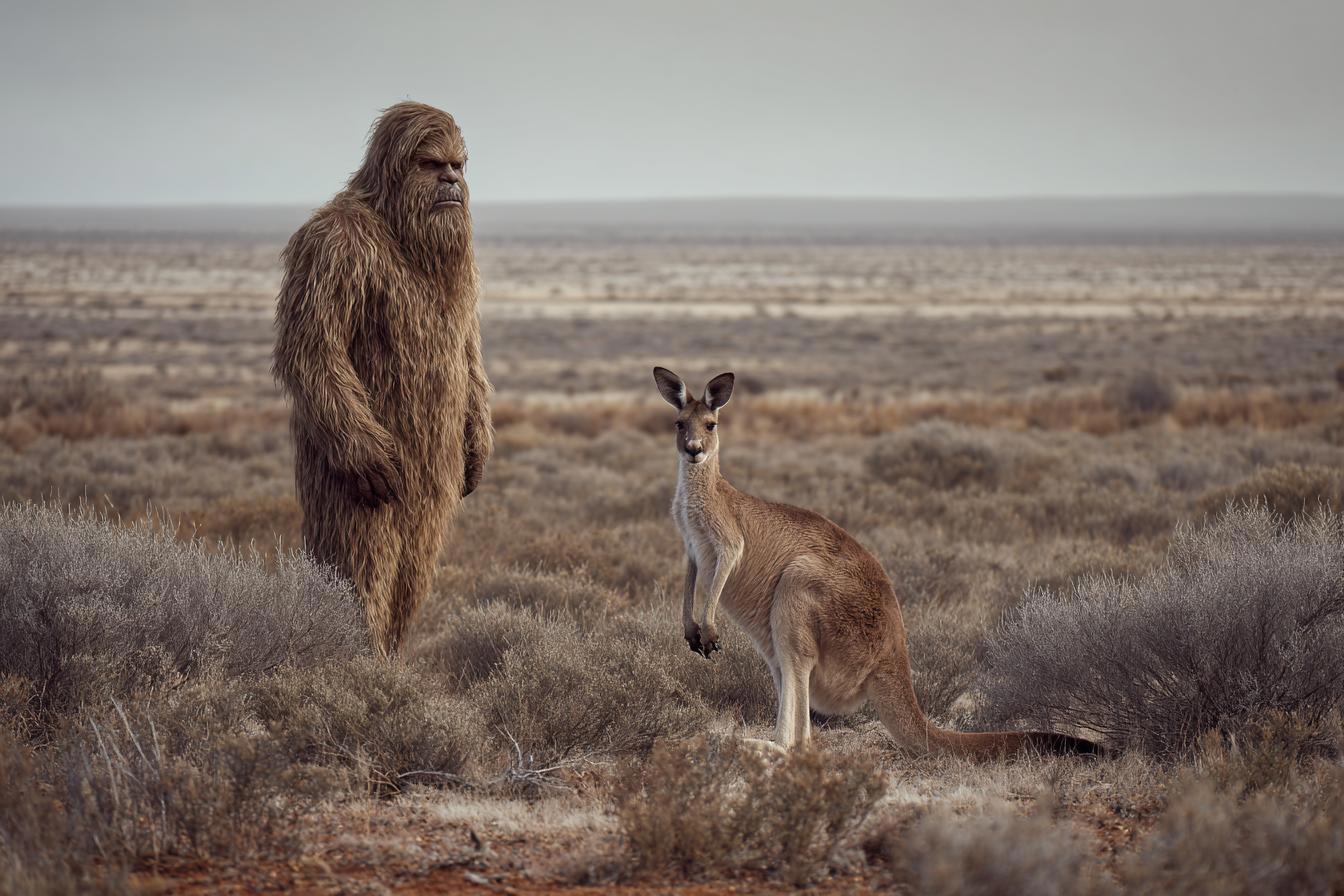
In Japan, there are legends of the Hibagon, which is spotted on and around Mount Hiba in Hiroshima and, from descriptions, appears to be almost identical to the typical American Bigfoot, although it seems to be shorter in height, standing around five feet tall. What is particularly strange about the Hibagon, though, is that sightings of it seem to have started from nowhere at some time in the early 1970s. This sudden appearance has led to multiple possible explanations, ranging from the Hibagon being nothing more than an undiscovered breed of monkey to it being possibly one or more residents of the city who were still suffering the aftereffects of the nuclear bomb dropped over the city in 1945 to bring the Second World War to an end.
In the remote woodlands and mountain regions of Hubei in China, we can find a very similar creature known as the Yeren, sightings of which, similarly, exploded in the second half of the twentieth century. In fact, according to statistics from the Xinhua News Agency, there have been over 400 official reports.
If we return to the United States for a moment, it is very much worth our time exploring the legends of the Billiwhack Monster that is said to reside in the abandoned Billiwhack Dairy Plant in California. Sightings of this strange and ominous creature began at some point after the Second World War, and while reports continue today, they appeared to reach a peak in the 1950s and 1960s. Those who claim to have encountered this menacing beast claim that it is covered in “dirty white hair” and has razor-sharp claws and “ram-like horns” on its head. Perhaps strangest of all, it is often described as looking half-human and half-sheep.
Some of the legends behind this beastly creature are as bizarre and intriguing as the monster itself. According to some, the Billiwhack Monster is the result of a top-secret military experiment that took place towards the end of the Second World War. This experiment looked, according to legend, to create a genetically superior super soldier by combining human DNA with that of an “unknown creature!”
It is interesting to note these claims of a “super soldier” that is a result of human and beastly DNA being combined. While we should treat them with a considerable pinch of salt, much like the claims of the Billiwhack Monster, is that some researchers suggest that the Third Reich were involved in almost identical genetics experiments during the Second World War, with the express purpose of having soldiers who could operate in the freezing conditions of Antarctica (these were, according to the claims, as Polar Men). Could it be possible, perhaps through such post-Second World War programs as Operation Paperclip, that these experiments were carried on, in top-secret, in the United States? It is certainly something worth keeping on the back burner of our minds.
Perhaps what is most interesting about the Billiwhack Monster is that its description is more akin to a Yeti, a creature often referred to as a Siberian or Russian Bigfoot, or, more widely, as the Abominable Snowman. And it is to the Yeti that we will turn our attention next.
In truth, it appears the Yeti roams the mountainous regions of Asia, Siberia, as well as the Himalayas, and we should note that for a large part of the twentieth century, many of these regions were under the control, or at the very least, the influence, of the Soviet Union. And while many insist that the Western Bigfoot is more of a supernatural being rather than a flesh-and-blood one, there is perhaps more reason to believe the latter is the case with the Yeti. It is perhaps worth noting the comments of Sir David Attenborough, who offered, following the discovery of fossils with huge molars, that “the Abominable Snowman may be real”, even suggesting that the Himalayas and the “immense rhododendron forest that goes on for hundreds of square miles could hold the Yeti!” He elaborated that “if there are some alive, and you walked by their habitat, you can bet these creatures may be aware of you, but you wouldn’t be aware of them!”
Sightings of the Yeti would appear to go back thousands of years, at least. One of the earliest apparent documented encounters with this Bigfoot creature of the East is relayed in the book Yeti, Sasquatch, and Hairy Giants by David Hatcher Childress. The account is taken from the ancient writing, Anabasis Alexandri: Book VIII by Arrian, and took place during Alexander the Great’s invasion of India in 326 BC. While making their way to the Indus River, a battle between Alexander’s men and a group of “hairy men” called Tomerus ensued. These Tomerus lived in “stifling cabins” along the banks of the river, and after engaging with Alexander’s men, several of them were captured while the rest fled to the nearby hills. Upon studying these captives more closely, it was recorded that they “were hairy, not only the heads but the rest of their bodies!” Moreover, they had “nails rather like beasts’ claws!” Interestingly, the account states that these beastly creatures wore “skins of animals” for clothing.
We can find another account from the ancient world of a Yeti in the writings of Claudius Aelianus in De Natura Animalium (On The Nature Of Animals), who detailed an encounter in India around 200 BC. Aelianus called these creatures Satyrs, and he wrote that they were “covered with shaggy hair!” He continued that these strange creatures, “when left to themselves, stay in the forest and eat tree sprouts!” However, when approached, “they run with incredible speed to hide in mountain caves!” One particularly interesting detail is that these creatures “repel approaching humans by hurling stones down at them!” This, of course, echoes many Bigfoot encounters.
We can find further documented encounters with Yetis in more (relatively speaking) recent times, many of which were relayed in the book Bigfoot by Rupert Matthews. One such account unfolded in Nepal in 1825 when hillwalker B.H. Hodgson claimed his porters told him of seeing a “tall creature covered with long, dark hair!” As soon as the strange creature noticed it was being watched, it “bounded off in apparent fear!”
Just short of 65 years later, in 1889, in Sikkim in northern India, Major L.A. Waddell was on an expedition when he came upon footprints that “seemed to be those of a barefooted man with enormous feet!” Perplexed but amazed, he asked his guide what the footprints belonged to. Without hesitation, he was told that they belonged to “the wild, hairy man!” Moreover, his guides insisted that they all should leave the area immediately.
Several years later, also in the Sikkim region of India, at some point in the 1890s, William Knight encountered an almost identical creature. Although the incident happened at the end of the nineteenth century, it wasn’t until the 1920s that Knight spoke of the encounter via a letter he sent to The Times newspaper. He stated that he was traveling from Tantok to Sedonchen when he stopped to allow his horse to rest for several moments. Almost as soon as they had come to a stop, he could hear a sound coming from behind him, like something emerging from the woodland. He turned around, and “some 20 paces away,” there was a strange creature. He wrote in the letter that he immediately assumed this was “one of the hairy men that the Tibetans call the Abominable Snowman!” He recalled that despite the “bitter cold”, the creature was completely unclothed and was well over six feet in height.
Although he stated that this figure had hair all over its body, he noted that he could make out “pale yellow” skin and that the figure had more hair on its head than on the rest of its body. Even stranger, he claimed that this creature was carrying “some form of primitive bow!” Ultimately, he watched the figure for around five minutes. Then, whether it noticed his attention or not, it suddenly took off running at “tremendous speed!”

A particularly interesting encounter unfolded in the early years of the twentieth century, not least as documentation of it likely resulted in the widely used epithet that this beastly creature would become known by. The encounter involved Mary MacDonald, the daughter of a colonial military officer who was with a team of porters in the mountainous regions close to the Tibetan border. As they made their way along the trail, a sudden piercing cry rang out, causing the group to stop in their tracks. Mary asked her guide what could have made such a sound. However, when she turned to face him, she realized the group was running in the opposite direction in terror. Instinctively, she reached for one of the guns and then set off towards the rest of the group. They all eventually came to a stop, and she was told that the creature who made the shrieking call was a “Metoh Kangmi” – this translated as “Bad Man of the Snow!”
Now, it would be another two decades before this moniker came up again, only on this occasion, the translation was slightly different, and it was this translation that spread throughout the West. As he was scouting Mount Everest, Colonel Howard-Bury was told of the same creature after they discovered extraordinarily large footprints in the snow. Howard-Bury, however, mistranslated the name as “Abominable Snowman”, which subsequently began appearing in print in English newspapers in various parts of the world.
Sightings and encounters with the Yeti have continued across the decades right into the modern age, with some of the most well-known occurring in the 1950s, a time when the wider populations of the West began taking notice of this strange cold-weather creature. Arguably, the most famous of these encounters resulted in one of the most famous photographs ever captured, which showed a clear, large footprint in the snow around Mount Everest. The picture was captured by English mountaineer Eric Shipton, who was on a research mission in the region in 1951. Incidentally, the discovery of the foot impression was at approximately 20,000 feet above sea level.
Three years later, John Angelo Jackson led an expedition to the same region with the specific goal of finding evidence of the “Abominable Snowman” – as it was now being referred to. The expedition was sponsored by the Daily Mail newspaper (and even billed as the Daily Mail Snowman Expedition) and stretched from Everest to Kanchenjunga. As well as discovering and photographing several footprints impressed into the snow during the expedition, the team also uncovered ancient symbolic depictions of the beast, perhaps confirming that it had been in existence in the region for thousands of years.
In 1959, American entrepreneur Tom Slick embarked on his expedition of the Himalayan regions in an attempt to locate proof of the Yeti, and his mission was arguably one of the most fruitful yet. He not only discovered a feces sample thought to have come from a Yeti, but when this sample was tested, a parasite was discovered within it that was, and remains, unknown to science. Moreover, declassified documents have since shown just how much of an interest the United States intelligence services took in these Bigfoot and Yeti creatures. This document states that “American resources in the last two years have been concentrated on efforts to capture the Abominable Snowman!”
One person who has studied the Yeti extensively is Maya Bykova, who conducted decades of research right up until she died in 1996. Perhaps one of the most fascinating details of her research, not least as it would resonate with researchers of the North American Bigfoot, is that these creatures can make themselves “invisible” as an act of defense. Once more, we might ask, is this something these creatures simply can do, or do they utilize some kind of technological device? To answer that question, we continue relaying Bykova’s research, which highlights the beliefs of the Tibetan red-hatted monks. They claim that the Yetis (and, incidentally, Bigfoot creatures) are one of the few remaining creatures on Earth that can control their brain activity to the point where they can make themselves appear invisible.
At this point, it is worth asking if the Yeti and the Bigfoot are the same creature, even different breeds of the same creature, or whether they are entirely different. Clearly, white hair aside, physical descriptions are very similar, although there are some differences. Their height, for example, is perhaps one of the clearest differences, with the Yeti seeming to be around six feet tall and the Bigfoot being around eight feet in height. Moreover, while Bigfoot is described as specifically ape-like, many descriptions of the Yeti tend to have an appearance more like a bear. Ultimately, these differences aside, it would appear that these creatures are related somehow.
We might ask, then, if there is a connection between these strange and elusive creatures, how long have they been here, and where did they come from? Are they indigenous to Earth, or were they brought here from elsewhere? Or might, as some researchers have suggested, they have been the result of a genetic experiment deep in antiquity? Although we are straying into ancient astronaut territory here, some researchers have highlighted several verses from ancient Sanskrit texts translated by Zecharia Sitchin that appear to describe just such a genetic experiment. The verses in question feature Enki, one of the leading Anunnaki, who is selecting the “most developed primate” on the planet with which to combine Anunnaki (extraterrestrial) DNA. Describing one of these early attempts, the verse states:
“Shaggy with hair all over was the newborn. His foreparts like of the Earth creatures were. His hind parts to those of the Anunnaki more akin they were.”
Another verse is even more descriptive. This verse describes one of the genetically-altered creatures after it had been given time to grow and develop. Despite this, Enki soon realized that this creation was also not suitable for their needs. The verse states:
“Taller the Earth child grew. In the image of the Anunnaki he was not. His hands for tools were not suited. His speech only grunting sounds was!”
Do these verses describe what we might recognize as a Bigfoot creature? And if Sitchin’s translations are correct (and we should note that many are highly suspicious as to the accuracy of his translations), then do they describe the Bigfoot’s origins on our planet? Is this why they seemingly possess such remarkable abilities as being able to render themselves invisible or even control a person’s mind? Perhaps these Bigfoot creatures were allowed to develop on their own, away from the Anunnaki, and, over the eons and centuries, away from humanity until (relatively speaking) recent years. If we look at another Sanskrit writing – the Epic of Gilgamesh – we might find another telling of Bigfoot and its history on our planet.
The Epic of Gilgamesh is the oldest text in the world, dated around 2700 BC, and tells the story of Enkidu, a close friend of Gilgamesh, a “wild man” who resided outside of the main city. Part of that text describes Enkidu as:
“…like an animal, Enkidu’s body had hitherto been covered with hair which is now shaved off. He is anointed with oil and clothed like a man!”
Could Enkidu have been a Bigfoot creature? And is this not only another example of documentation of these creatures in the ancient world, but of their apparent intelligence? While this tale tells of Enkidu wearing clothes and shaving his body hair, we might imagine that other Bigfoot creatures will have existed who remained outside of society.
As we might imagine, many experts insist that the Epic of Gilgamesh is nothing but a work of fiction. However, we should note that Gilgamesh himself was very real, with many records of his activities and achievements. Moreover, when this particular tale was committed to the official record, writing was much more of an arduous and expensive task, and as such, only the most important information was “written” down. With this in mind, and given that we know Gilgamesh very much existed, we perhaps should take the tales of Enkidu at much more face value.
Whatever the truth, Bigfoot (and Yetis) remain not only one of the most elusive entities on the planet, but one of the most mysterious and intriguing. Indeed, should we ever manage to establish the true nature and origins of these creatures, it would likely shine a light on many other unsolved and unexplained areas of our collective reality, possibly providing answers to everything from cryptid creatures (as we would understand them) to UFOs and even the potential existence of portals and gateways. In that sense, Bigfoot is so much more than just a wild beast that roams the woodlands and wilderness in an attempt to avoid contact with humanity. It is very likely one of the keys to the mysteries of the Universe and our collective existence within it.
Trending Podcasts
-
 34.05 I MU Podcasts
34.05 I MU Podcasts34.05 - MU Podcast - Truth Lurks in Shadows
-
 +32.06 I MU+ Podcasts
+32.06 I MU+ Podcasts32.06 - MU Plus+ Podcast - Cosmic Lawfare
-
 34.06 I MU Podcasts
34.06 I MU Podcasts34.06 - MU Podcast - Web of the Plasma Angel
-
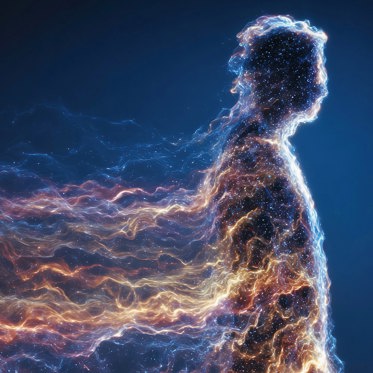 +32.05 I MU+ Podcasts
+32.05 I MU+ Podcasts32.05 - MU Plus+ Podcast - The Escaping Aura
-
 34.04 I MU Podcasts
34.04 I MU Podcasts34.04 - MU Podcast - The Occult Wyrm
-
 +32.07 I MU+ Podcasts
+32.07 I MU+ Podcasts32.07 - MU Plus+ Podcast - The Sorcerer's Cloak






